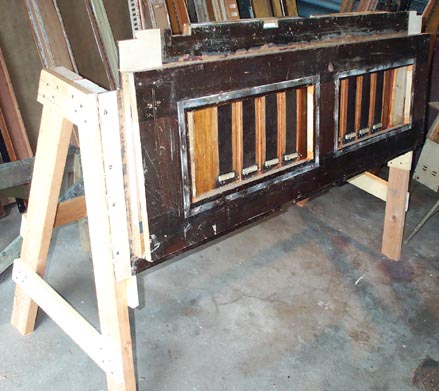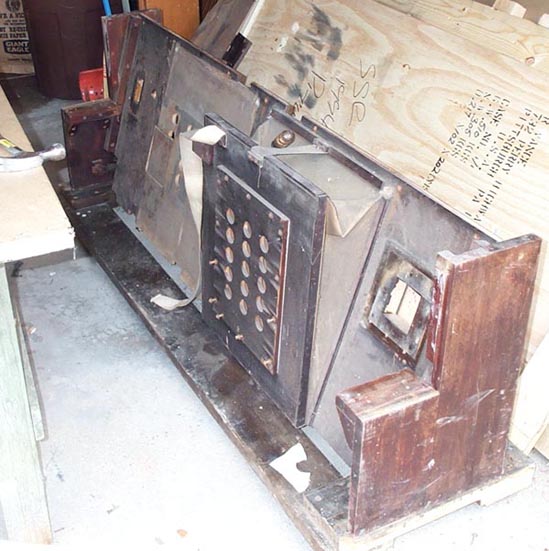
Chapter 4.2 - Repair and Reconstruction of the Framework and Boards.
Sometime in the past, one of the feeders had been removed to make room for a blower. Here is a picture of the wind system as received, with only the lower case stripped off. The rectangular holes in the main board, lead from the reservoir (on the other side) to the vertical stop chests.

To make room for the blower duct, a big hole was cut right into the flap valve array for the removed feeder. Also, the plywood main board (oak lumber core with poplar crossbanding) had become delaminated in several places. The inner surface of this, forming the inner flap valve seating surface, was cracked and wrinkled.
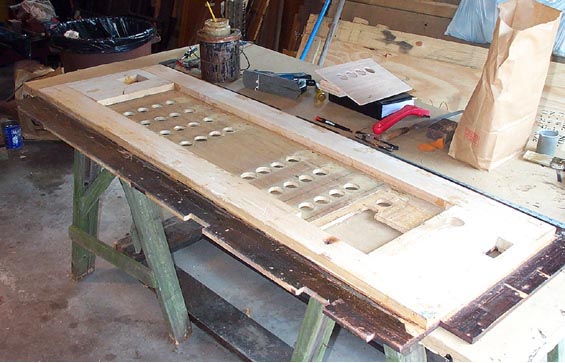
These surfaces were covered with new seat areas, made from 1/4" Finnish birch plywood with a cherry top layer. I selected cherry because it was the densest, closest grained hardwood veneer available. The duct opening in the feeder frame was enlarged with a chisel, so that the new seat board there overlapped the remaining parts of the main plywood board on all sides. On the feeder side, the duct opening in the plywood board was patched, and new gluing sticks for the feeder cloth, matching the style of the other feeder, were installed.
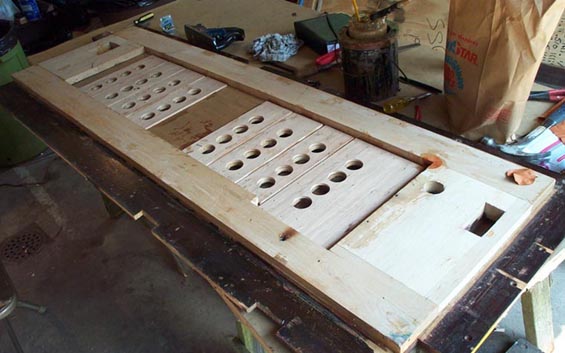
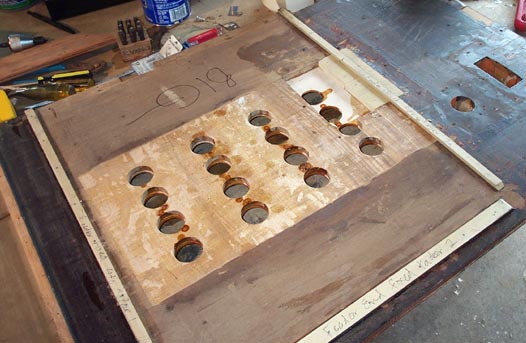
All the joints between the old and new wood were sealed with pouch leather strips or stretched circles. The maple framework, although still sound and strongly jointed, had shrunk slightly, so just in case, all the cracks were sealed with pouch leather circles of cloth strips. This is one thing in this chapter that might well be done on any Orchestrelle, even if extensive reconstruction were not needed.
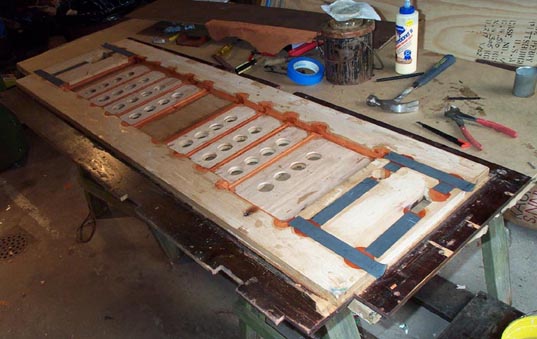
All the places where the old, possibly delaminated, plywood presented an open edge to the wind supply were sealed. The round hole in the main board is where the roll motor regulator is connected. The joints in the reservoir movable board were likewise sealed.
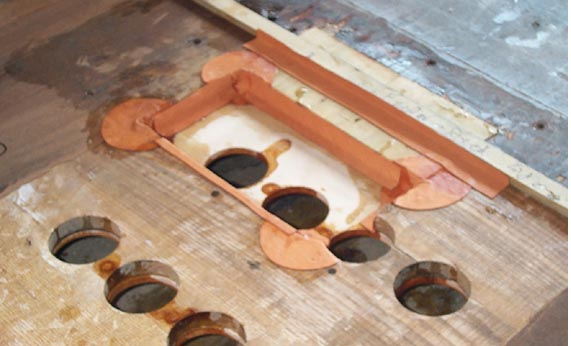
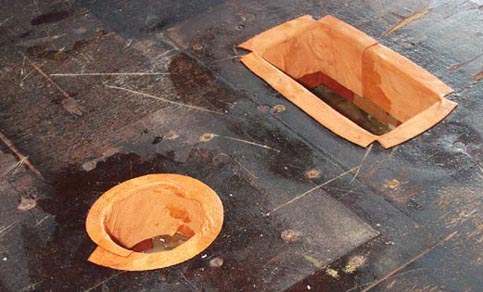
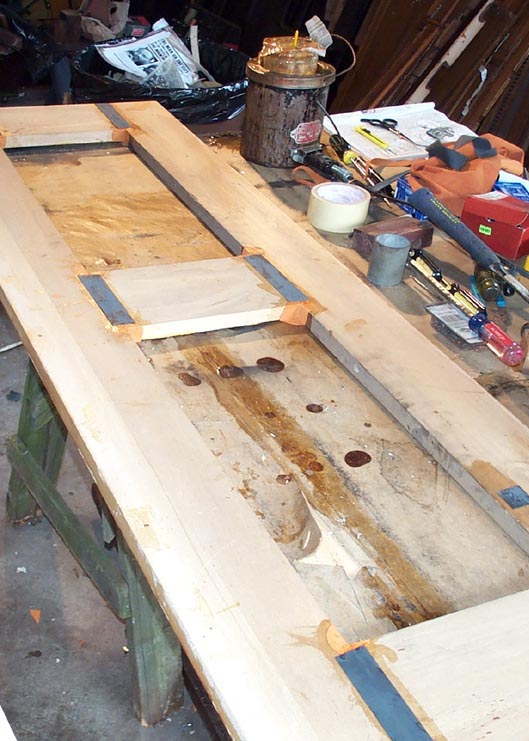
A lot of the crossbanding on the outside edges of the main board had come loose, so this was replaced with new veneer. Don't yell at me about contact cement; I am not that much of a hot glue purist. These joints don't hold air, and don't have to be undone at a future rebuild. But the new veneer is needed to produce a reasonable appearance, and to make the end dimensions of the main board nearly original, so the whole thing will fit up correctly.
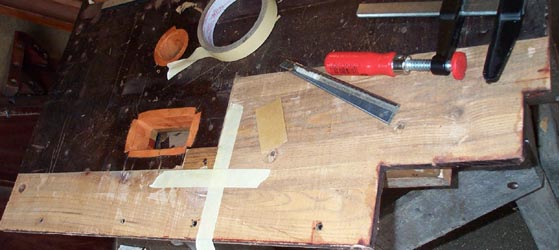
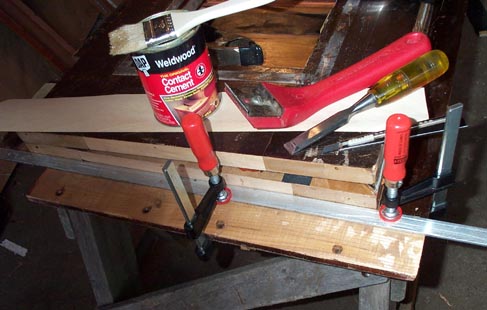
Finally an A-frame was made to hold the whole assembly in a convenient position for applying the cloth. Either side, and top or bottom, can be upright, as needed. Unlike a player piano or American reed organ lower unit, this assembly is very heavy. One can not just swing it around to any angle and clamp it in the vise.
